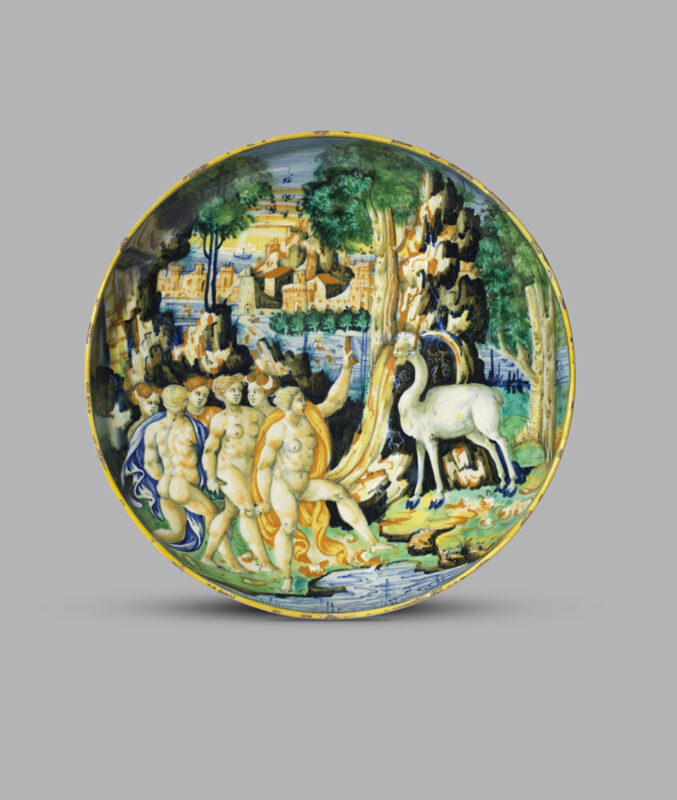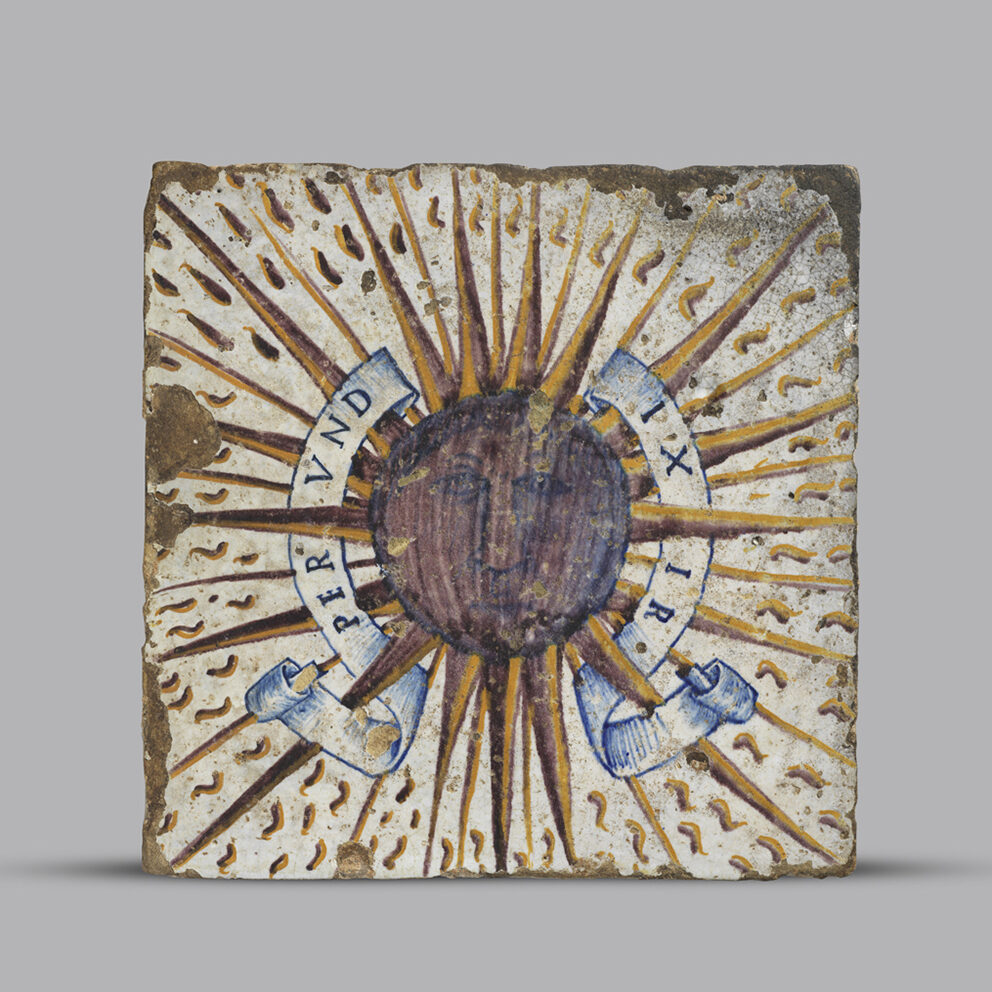
Footed dish with Diana and Actaeon changed into a Stag
Probably the workshop of Ludovico and Angelo Picchi
A Renaissance maiolica dish with the Story of Diana and Acteon – by Elisa Sani, Research Fellow at The Courtauld Gallery and Author of an upcoming catalogue on The Courtauld’s Ceramics
Unfair savagery? Female empowerment? Revenge for cruelty on animals?
The story of Diana and Acteon, as told by the Roman poet Ovid in his Metamorphoses, is one of the cruellest myths from the classical world.
There was a lush and mysterious green valley, sacred to the goddess Diana. Acteaon, out hunting, stumbled into her while she was bathing with her nymphs. Outraged at his having seen her naked, Diana punished him. Not having her bow and arrows to hand, she transformed him into a stag by sprinkling water at him. His own hounds, not recognising him, consequently devoured him.
Among the dozens of myths represented in the Metamorphoses, the story of Diana and Acteon was the most popular for Renaissance maiolica (tin-glazed earthenware). Skilled pottery painters in Italy invented a new style of painting called istoriato, or story painting, which flourished in the lands of The Dukes of Urbino, where this dish was made. The workshop who made it was based in Casteldurante and had a particular obsession with this subject, painting dishes with all the different phases of the story. On this dish, Diana mocks Acteon by showing him his own reflection as a stag, the sad look on his still human face.
Given the frequent consumption of game at the time, the scene is unlikely to have been a critique of Acteon as hunter. Neither can it be about female empowerment as we understand it today, since it glorifies modesty and chastity, key virtues for Renaissance women.
This dish was part of a large table service illustrating different subjects. At the end of the meal, the guests could have discussed the scene, the cultured host starting off the conversation by asking her or his guests: ‘Was Diana right in punishing Acteon so cruelly? What do you think?’
See this object in The Courtauld Gallery
See more collection highlights
Explore The Courtauld’s remarkable collection of paintings, prints and drawings, sculpture and decorative arts.
Explore



